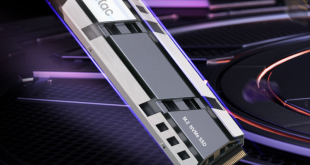To test this router we set-up a simple network in our house, which used a standard Virgin Media Router as a modem. We then plugged in both the ASUS RT-AC66U and our Buffalo AirStation Nfiniti Dual Band Wireless Router (WZR-HP-AG300H). This allows us to have a fairly decent benchmark router which we know performs very well at N300 speeds.
Unfortunately, there aren't many 802.11 AC devices out but we did manage to pick up a Netgear A6200 WiFi Dual Band USB adapter, in fact it hadn't been released when we started the review. While this is by far the fastest USB dongle on the market, its top possible speed is limited to 867 Mbps, although the ASUS RT-AC66U should be able to reach 1.3 Gbps on the 5 GHz band.
We then set-up the routers in the same room, on different channels to ensure no interference. We then used the Buffalo AirStatio Nfiniti N450 Wireless-N USB Adapter plugged into our laptop so that we could test the range of both routers under 2.4 GHz settings.
We initially tested this in the same room, and unsurprisingly we were connected at a full 450 Mbps from the ASUS router and a full 300 Mbps from the Buffalo.
We then went to the end of the garden (approximately ~15 meters but including 3 thick walls) and repeated the test. This time the ASUS router had dropped to 4 bars of strength, and the Buffalo had dropped to 3 bars.
The wireless speed's had also dropped but the ASUS was remaining at ~263 Mbps (although still peaking up to 405 Mbps), while the Buffalo had dropped all the way down to ~52 Mbps. While the ASUS router has a slight headstart (i.e. faster to start off with) it is clear that over distance the ASUS router still performs really well.
We then switched to our new Netgear A6200 802.11 AC Dual Band USB adapter, and tested the relative 5 GHz speeds. At a distance of 1 meter the ASUS router was maintaining a very impressive 702 Mbps, which is easily the fastest we have ever tested. Moving to a distance of 15 metres the speed had however dropped to the 263 Mbps that we saw with the 2.4 Ghz band.
While we know there is more potential to come from the ASUS router we were certainly impressed with its relative performance, and it certainly bodes well for the future AC devices.
In terms of the user interface, we have always liked the approach taken by ASUS. It is simple, effective and really easy to navigate.
The display doesn't feel cluttered but there are more than the usual options available. We were also impressed with the loading times, as with many networked devices you have to wait for the next page to load, but with the ASUS UI it was almost instantaneous.
The ASUS RT-AC66U is a feature packed router with 2 x USB ports that can act as a print server or in conjunction with storage to give a NAS set-up. It also incorporates ASUS AiCloud which does look to be a great service, and has several advantages over Dropbox or Google Drive. You can attach as much storage as you want, easily giving you several TB of data storage if needed.
Overall the device performed great, and was easy to use. As expected with a cutting edge device, the costs are high. It can currently be purchased for £180.98 from Amazon.co.uk, which is quite a lot when you can't get the best performance out of it just yet. Of course, you will also have to factor in the cost of the latest 802.11ac USB dongle which in our case set us back another £70. That said, we do expect prices will fall quite quickly.
Pros
- Performance of 5 GHz at close range is very impressive.
- Lots of great features.
- Extremely stable router.
- ASUS AiCloud incorporated.
- A future-proof wireless router.
Cons
- High price tag.
- 5 GHz speeds dropped off quite quickly with range.
- Can't get full speed out of the device with current technology.
Kitguru says: With the potential of 1.3 Gbps data transfer rate this will be a fast performing router which will be perfect for the media savvy audience for years to come.
 KitGuru KitGuru.net – Tech News | Hardware News | Hardware Reviews | IOS | Mobile | Gaming | Graphics Cards
KitGuru KitGuru.net – Tech News | Hardware News | Hardware Reviews | IOS | Mobile | Gaming | Graphics Cards




thats great, but id only buy this for laptops, and id need a ton of those USB dongles which make the laptop very bulky IMO.
“Can’t get full speed out of the device with current technology.”
I don’t see how this is a Con? You say it’s future proofed as a pro, then say it’s a con at the same time? I’d rather it be ahead of the game so I don’t have to be buying new routers when faster tech comes out.
I understand the point – its very fast, but its hard to get full speeds. None of my laptops can handle this speed, due to the current technology. so its good to look ahead but right now you are limited.
Good review actually, im buying one as I might pick up a few of those USB netgear dongles too.
Kitguru is an excellent website but the author of this article seems to have some difficulty with consistent units of measurement. There is quite a difference between MB/s (megabytes per second) and Mb/s or Mbps (megabits per second). 450 MB/s is about 3600 Mbps (SSD data transfer speeds) and is unlikely to be seen on a current wireless router.
Hi Idawari, That was actually my fault as I meant to edit the 2 or 3 ‘MB/s’ errors to the correct naming.